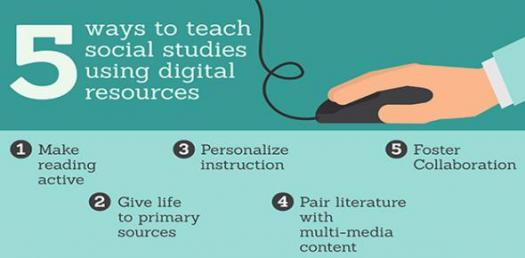3rd Grade: A Basic Social Studies Quiz

Are you sure you so much about human rights? It is a topic considered compulsory in the third-grade social studies curriculum! Human rights include all rights that must be enjoyed by all human beings, regardless of nationality, ethnicity, and religion. What do you know about the legislation concerning human rights? Do you know child rights too?
- 1.
Which of these is not a civil right?
- A.
Freedom of expression
- B.
Right to life
- C.
Right to liberty
- D.
Right to freedom
Correct Answer
D. Right to freedomExplanation
The right to freedom is not a civil right. While all the other options listed are civil rights, the right to freedom is a broad concept that encompasses various civil rights such as freedom of expression, right to life, and right to liberty. Therefore, it cannot be considered as a distinct civil right on its own.Rate this question:
-
- 2.
Which of these is an African organization promoting human rights?
- A.
European Union
- B.
American Union
- C.
African Union
- D.
United Nations
Correct Answer
C. African UnionExplanation
The African Union is an African organization that promotes human rights. It is a continental union consisting of 55 member states in Africa. The African Union works towards achieving political and economic integration, peace and security, and human rights protection in Africa. It aims to promote and protect the rights of all individuals in Africa, ensuring their dignity, equality, and freedom.Rate this question:
-
- 3.
How many states are in the African Union?
- A.
59 states
- B.
55 states
- C.
66 states
- D.
81 states
Correct Answer
B. 55 statesExplanation
The African Union consists of 55 member states. These states are sovereign countries located in Africa that have chosen to join the African Union to promote unity, cooperation, and development on the continent.Rate this question:
-
- 4.
What is the freedom to articulate one's opinion called?
- A.
Freedom of speech
- B.
Right to life
- C.
Right to education
- D.
Natural right
Correct Answer
A. Freedom of speechExplanation
Freedom of speech refers to the right of individuals to express their opinions and ideas without censorship or fear of punishment. It is a fundamental human right that allows individuals to articulate their thoughts, beliefs, and perspectives openly and freely. This freedom is essential for the functioning of a democratic society, as it encourages open dialogue, the exchange of ideas, and the ability to challenge and question authority.Rate this question:
-
- 5.
When was the League of Nations formed to negotiate human rights established?
- A.
1919
- B.
1912
- C.
1913
- D.
1911
Correct Answer
A. 1919Explanation
The League of Nations was formed in 1919 to negotiate human rights. It was established after the end of World War I, with the aim of preventing future conflicts and promoting international cooperation. The League of Nations played a significant role in the development of international law and the protection of human rights, although it was eventually replaced by the United Nations in 1945.Rate this question:
-
- 6.
Which of these personalities was an Indian human rights activist?
- A.
Singh Tamir
- B.
Hammed Roma
- C.
Elwir Singh
- D.
Mahatma Ghandi
Correct Answer
D. Mahatma GhandiExplanation
Mahatma Gandhi was an Indian human rights activist known for his nonviolent resistance against British colonial rule in India. He fought for the rights and freedom of the Indian people, advocating for civil rights, equality, and justice. Gandhi's philosophy of nonviolence and his leadership in the Indian independence movement made him a prominent figure in the fight for human rights not only in India but also globally.Rate this question:
-
- 7.
Which of these refers to interaction with others?
- A.
Economic rights
- B.
Social rights
- C.
Political rights
- D.
Cultural rights
Correct Answer
B. Social rightsExplanation
Social rights refer to the rights that individuals have to participate in society and interact with others. These rights include the right to education, healthcare, social security, and the right to form and join associations and trade unions. Social rights are essential for individuals to lead a dignified and fulfilling life and to actively engage in their communities. They promote social inclusion, equality, and the well-being of all members of society.Rate this question:
-
- 8.
Which of these is not an economic right?
- A.
Right to housing
- B.
Right to science and culture
- C.
Right to adequate standard of living
- D.
Right to life
Correct Answer
D. Right to lifeExplanation
The right to life is not considered an economic right, but rather a fundamental human right. Economic rights typically refer to the rights related to economic activities and resources, such as the right to housing, right to science and culture, and right to an adequate standard of living. The right to life, on the other hand, encompasses the basic right to exist and be protected from harm, and is not directly tied to economic activities or resources.Rate this question:
-
- 9.
When was the Universal Declaration for Human Rights adopted by the United Nations?
- A.
1988
- B.
1976
- C.
1948
- D.
1977
Correct Answer
C. 1948Explanation
The Universal Declaration for Human Rights was adopted by the United Nations in 1948. This declaration was a landmark achievement that established a set of fundamental human rights that should be protected and respected by all nations. It was a response to the atrocities committed during World War II and aimed to ensure that such violations would never occur again. The declaration has since served as a foundation for international human rights law and has been instrumental in promoting equality, justice, and dignity for all individuals worldwide.Rate this question:
-
- 10.
When was the Bill of Rights adopted in the United Kingdom?
- A.
1968
- B.
1977
- C.
1949
- D.
1693
Correct Answer
A. 1968 -
Quiz Review Timeline +
Our quizzes are rigorously reviewed, monitored and continuously updated by our expert board to maintain accuracy, relevance, and timeliness.
-
Current Version
-
Oct 22, 2024Quiz Edited by
ProProfs Editorial Team -
May 02, 2019Quiz Created by
Gregorynaomi
 Back to top
Back to top












